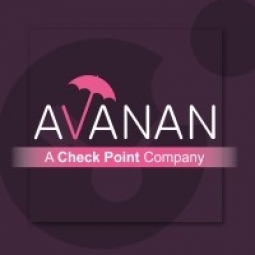Download PDF
Why an Engineering Company “Hated” Mimecast and Now “Loves” Avanan
Technology Category
- Cybersecurity & Privacy - Cloud Security
Applicable Industries
- Professional Service
Applicable Functions
- Business Operation
Use Cases
- Cybersecurity
Services
- Cloud Planning, Design & Implementation Services
- Cybersecurity Services
The Challenge
Engineering Associates had been using Mimecast for years to protect their on-premise Microsoft environment. However, when they moved to the cloud, they started experiencing plenty of delivery issues and tons of phishing getting through to the inbox. They needed an easy-to-use solution that stopped more phishing and caused fewer headaches. For a new email security solution, the first criteria was improved phishing detection. Secondly, they needed an easy-to-use, hands-off solution that did the work for him.
About The Customer
Engineering Associates is an engineering consulting firm on the West Coast. The company's IT department is run by Ryan Fox. For years, the company used Mimecast to protect their on-premise Exchange environment and didn’t mind it. However, when they moved to the cloud a few years ago, they noticed a precipitous drop in efficacy. The company was tired of the lack of efficacy and the inconsistent customer service from Mimecast. They were looking for a solution that was easy to use, hands-off, and did the work for them.
The Solution
After reading the scores of five-star reviews on Gartner and G2 for Avanan, Engineering Associates decided to give it a try. Avanan’s phishing protection works differently than Mimecast. Avanan catches the emails that Mimecast and Microsoft miss, serving as the final layer of protection. On the POC, the results were instant. Within a week, Avanan blocked 406 phishing messages that Mimecast did not. After two weeks, Avanan blocked 725 phishing emails, as well as 10,000 spam messages. After two and a half weeks, Avanan caught 1,000 phishing emails that Mimecast missed. The company also appreciated Avanan’s intuitive interface.
Operational Impact
Quantitative Benefit
Related Case Studies.
Case Study
UBM plc: Taking the pulse of the business and engaging employees with a far-reaching strategic transformation
UBM, a leading global events business, was undergoing a significant strategic transformation named 'Events First'. As part of this transformation, the company was preparing to complete the largest acquisition in its history - Advanstar, a US-based events and marketing services business valued at more than USD970m. The company faced the risk of human capital flight if it was unable to effectively engage top talent with the new strategic direction. UBM needed to make significant structural, process and systems changes, uniting its previously autonomous regional businesses. The challenge was to ensure all of its employees were engaged and aligned with the new future vision.
Case Study
Wittmann EDV-Systeme launches IT monitoring services
Small and medium-sized businesses often lack the know-how and resources required for thorough IT system monitoring. Wittmann EDV-Systeme wanted to launch a solution to plug the gap – enabling it to improve its own competitiveness and that of its customers. IT landscapes are becoming ever more complex and outsourcing is gaining popularity, IT systems must nonetheless remain easy-to-use and extremely reliable at all times. Automated, round-the-clock system monitoring therefore represents an immensely valuable proposition for companies: downtime for business-critical applications can be avoided, and IT systems remain available at all times.
Case Study
Uncovering behavioral insight to help reward and retain the best employees
The HR services company, an IBM client, was facing the challenge of understanding the factors underlying personal employment choices. They wanted to offer their clients unprecedented insight into what motivates employees and prospective job candidates. However, their existing systems were not capable of handling the surging data volumes collected from a wide range of different data sources. With the total volume likely to keep on growing, the firm looked for a solution that could meet current needs and scale to meet tomorrow’s demands.
Case Study
Infosys achieves a 5–7 percent effort reduction across projects
Infosys, a global leader in consulting, technology, and outsourcing solutions, was facing significant challenges in application development and maintenance due to its distributed teams, changing business priorities and the need to stay in alignment with customer needs. The company used a mix of open source, home-grown and third-party applications to support application development projects. However, challenges resulting from distributed teams using manual processes increased as the company grew. It became more and more important for Infosys to execute its projects efficiently, so they could improve quality, reduce defects and minimize delays.
Case Study
Flex Contact Center: Supporting rapid business growth with IBM Connections Cloud and IBM Verse
Flex Contact Center, a professional services company offering telesales, call-center, anti-attrition, back-office, helpdesk and collection services, has grown rapidly since its establishment in 2009. With operations in 12 sites across two states and four cities in Brazil, the company employs more than 11,000 people. However, the company realized that to prevent barriers to future expansion, it was essential to make it as easy as possible for its people to work together effectively—even if they were based in separate geographical locations. Traditional approaches to collaboration—based on email and phone calls—threatened to reduce productivity. Flex Contact Center wanted to enable better collaboration and communication across its workforce, but did not want to make large investments in infrastructure.
Case Study
PureFluent: Connecting to partners and customers through the cloud for enhanced productivity
PureFluent, a translation services company, was facing challenges in managing its translation and document review processes. The company often received files in uneditable formats from customers, which required staff members to transfer text to word processing or spreadsheet documents. During the translation process, maintaining version control was a challenge because PureFluent sent work to hundreds of translators in multiple geographic locations. It was also time-consuming for staff to manage the large volume of emails and FTP transactions required to submit translations for customer review and ensure the integration of requested changes. Furthermore, staff were spending significant time hunting through their emails for specific attachments.





